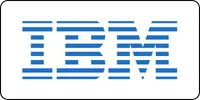Health Care Analytics Course








Healthcare Analytics certification course
Course Benefits
The ability to translate raw medical data into actionable insights allows participants to:
- Enhance patient treatment strategies
- Improve hospital resource allocation
- Predict public health trends
- Influence healthcare policy
Additionally, the course develops critical thinking and problem-solving skills, empowering learners to address complex challenges in modern healthcare systems.
Why Choose This Course?
Career Outlook
What will I learn?
- Understand the role and importance of healthcare analytics in healthcare delivery and management.
- The course will foster communication and collaboration skills, enabling participants to effectively communicate healthcare insights and findings to stakeholders, collaborate with healthcare teams, and influence decision-making processes.
- Students will be introduced to prescriptive analytics concepts and techniques, enabling them to optimize healthcare resource allocation, design interventions to improve patient outcomes, and make data-driven decisions to achieve healthcare objectives.
- Explore tools and technologies used in healthcare analytics, including electronic health record (EHR) systems and data visualization tools.
- Explore tools and technologies used in healthcare analytics, including electronic health record (EHR) systems and data visualization tools.
- Mastering statistical analysis methods to interpret healthcare data, including descriptive statistics, inferential statistics, and hypothesis testing.
- Designing interactive dashboards to present data trends, patient outcomes, and healthcare metrics to various stakeholders.
- Creating impactful visualizations to communicate complex data insights effectively using tools like Tableau, Power BI, or specialized healthcare analytics software.
Requirements
- Familiarity with spreadsheet software (e.g., Microsoft Excel) is recommended
- Basic understanding of healthcare concepts and terminology.
Healthcare Analytics Course Content
- SQL Fundamentals
- Various types of databases
- Introduction to Structured Query Language
- Distinction between client server and file server databases
- Understanding SQL Server Management Studio
- SQL Table basics
- Data types and functions
- Transaction-SQL
- Authentication for Windows
- Data control language
- The identification of the keywords in T-SQL, such as Drop Table
- Database Normalization
- Entity Relationship Model
- SQL Operators
- Working with SQL
- Join
- Tables
- Variables
- Advanced concepts of SQL tables
- SQL functions
- Operators & queries
- Table creation
- Data retrieval from tables
- Combining rows from tables using inner, outer, cross, and self joins
- Deploying operators such as ‘intersect,’ ‘except,’ ‘union,’
- Temporary table creation
- Set operator rules
- Table variables•
- Deep Dive into SQL Functions
- Working with Subqueries
- SQL Views, Functions, and Stored Procedures
- Deep Dive into User-defined Functions
- SQL Optimization and Performance
- SQL Server Management Studio
- Using pivot in MS Excel and MS SQL Server
- Differentiating between Char, Varchar, and NVarchar
- XL path, indexes and their creation
- Records grouping, advantages, searching, sorting, modifying data
- Clustered indexes creation
- Use of indexes to cover queries
- Common table expressions
- Index guidelines
- Managing Data with Transact-SQL
- Querying Data with Advanced Transact-SQL Components
- Programming Databases Using Transact-SQL
- Creating database programmability objects by using T-SQL
- Implementing error handling and transactions
- Implementing transaction control in conjunction with error handling in stored procedures
- Implementing data types and NULL
- Designing and Implementing Database Objects
- Implementing Programmability Objects
- Managing Database Concurrency
- Optimizing Database Objects
- Advanced SQL
- Correlated Subquery, Grouping Sets, Rollup, Cube
- Implementing Correlated Subqueries
- Using EXISTS with a Correlated subquery
- Using Union Query
- Using Grouping Set Query
- Using Rollup
- Using CUBE to generate four grouping sets
- Perform a partial CUBE
Basic Math
- Linear Algebra
- Probability
- Calculus
- Develop a comprehensive understanding of coordinate geometry and linear algebra.
- Build a strong foundation in calculus, including limits, derivatives, and integrals.
- What is Keras?
- How to Install Keras?
- Why to Use Keras?
- Different Models of Keras
- Preprocessing Methods
- What are the Layers in Keras?
- Descriptive Statistics
- Sampling Techniques
- Measure of Central Tendency
- Measure of Dispersion
- Skewness and Kurtosis
- Random Variables
- Bassells Correction Method
- Percentiles and Quartiles
- Five Number Summary
- Gaussian Distribution
- Lognormal Distribution
- Binomial Distribution
- Bernoulli Distribution
- Inferential Statistics
- Standard Normal Distribution
- ZTest
- TTest
- ChiSquare Test
- ANOVA / FTest
- Introduction to Hypothesis Testing
- Null Hypothesis
- Alternet Hypothesis
- Probability Theory
- What is Probability?
- Events and Types of Events
- Sets in Probability
- Probability Basics using Python
- Conditional Probability
- Expectation and Variance
- Python Programming
- Python for Analytics
- R Programming
- R for Anlalytics
- Introduction
- Roles
- Snowflake Pricing
- Resource Monitor – Track Compute Consumption
- Micro-Partitioning in Snowflake
- Clustering in Snowflake
- Query History & Caching
- Load Data from AWS – CSV / JASON / PARQUET & Stages
- Snow pipe – Continuous Data Ingestion Service
- Different Type of Tables
- Time Travel – Work with History of Objects & Fail Safe
- Task in Snowflake – Scheduling Service
- Snowflake Stream – Change Data Capture (CDC)
- Zero-Copy Cloning
- Snowflake SQL – DDL
- Snowflake SQL – DML & DQL
- Snowflake SQL – Sub Queries & Case Statement
- Snowflake SQL – SET Operators
- Snowflake SQL – Working with ROW NUMBER
- Snowflake SQL – Functions & Transactions
- Procedures
- User defined function
- Types of Views
- Intro to Qlik View
- Installation of Qlik view
- Data Modelling in Qlik View
- Circular reference
- Link Tables to your model
- Joins in Qlik view
- ETL in Qlik View
- Handling Null Values
- Visualizations in Qlik View
- Pivot Table in Qlik View
- KPI Development in Qlik View
- Introduction to Alteryx
- Download and Install Alteryx
- User Interface of Alteryx
- Get Data from Excel
- Get Data from CSV
- Append All CSV files
- Browse Tool
- Output Tool – Update Existing Data
- Directory Tool
- Directory Tool – Specific Files
- Text Input Tool
- Date and Time Tool
- Auto Field Tool
- Data Cleansing Tool
- Filter Tool (Text Example)
- Filter Tool (Number Example)
- Filter Tool ( Date Example)
- Formula Tool ( Basic Example )
- Formula Tool – (Multiple Examples)
- Generate Rows Tool
- Imputation Tool
- Multi-Field Binning Tool
- Multi-Field Formula
- Multi Row Formula
- Random % Sample Tool
- Sample Tool
- Record Id Tool
- Select Tool
- Sort
- Create Sample Tool
- Tile Tool
- Unique Tool
- Append Fields Tool
- Find And Replace Tool
- Fuzzy Match Tool
- Join Tool
- Join Multiple Tool
- Union Tool
- Regex Tool
- Text To Columns
- Cross Tab Tool
- Transpose Tool
- Running Total Tool
- Summarize Tool
- Table Tool
- Interactive Chart Tool
- Join Table And Chart
- Add Annotation
- Report Text Tool
- Report Header Tool
- Report Footer Tool
- Report Layout Tool
- Comment Tool
- Explorer Tool
- Container Tool
- Cloud AWS
- Cloud Azure
- Introduction to GIT
- Version Control System
- Introduction and Installation of Git
- History of Git
- Git Features
- Introduction to GitHub
- Git Repository
- Git Features
- Bare Repositories in Git
- Git Ignore
- Readme.md File
- GitHub Readme File
- GitHub Labels
- Difference between CVS and GitHub
- Git – SubGit
- Git Environment Setup
- Using Git on CLI
- How to Setup a Repository
- Working with Git Repositories
- Using GitHub with SSH
- Working on Git with GUI
- Difference Between Git and GitHub
- Working on Git Bash
- States of a File in Git Working Directory
- Use of Submodules in GitHub
- How to Write Good Commit Messages on GitHub?
- Deleting a Local GitHub Repository
- Git Workflow Etiquettes
- Git Packfiles
- Git Garbage Collection
- Git Flow vs GitHub Flow
- Git – Difference Between HEAD, Working Tree and Index
- Git Ignore
- Introduction of Scum and Agile
- How to differentiate between Waterfall and Agile
- Agile Framework
- Agile Manifesto
- Agile Principles
- Top Agile Methodologies
- Scrum terminology and roles
- Managing tasks and events within a Sprint
- Scrum Framework
- Introduction to Scrum Framework
- Three pillars of Scrum Framework
- Values of Scrum
- When to use Scrum
- Cross-Functional, Self-Organizing Teams
- Scrum Team philosophy
- Developers
- Product Owner
- Scrum Master
- Scrum Events and Planning
- Scrum Events
- Understanding Sprint
- Sprint Planning
- Daily Scrum Meeting
- Sprint Review Meeting
- Sprint Retrospective
- Scrum Planning with backlog
- Product Backlog
- Refining Backlog
- Backlog items Estimation
- Planning Poker
- T-Shirt Sizing
- Defining Product Goals
- User Stories and INVEST
- Sprint Backlog
- Definition of Done
- Product Increment
- Definition of Done
- Objective and Scope
- Objective: To improve the effectiveness of marketing campaigns by analyzing customer behavior data.
- Scope: Focus on a retail company’s email marketing campaigns over the past year.
- Background Information
- Business Context: A retail company wants to increase sales through targeted email marketing campaigns.
- Data Sources: Customer transaction data, email campaign engagement metrics (open rates, click-through rates), demographic information.
- Data Collection and Preparation
- Data Collection: Gather transactional data from the company’s CRM system and email campaign data from marketing tools.
- Data Cleaning: Handle missing values, remove duplicates, and ensure data consistency.
- Data Transformation: Merge datasets, perform segmentation based on customer demographics and purchase history.
- Data Analysis and Exploration
- Descriptive Analytics: Analyze email open rates, click-through rates, and conversion rates over time.
- Exploratory Data Analysis (EDA): Identify trends in customer behavior and preferences.
- Customer Segmentation: Use clustering algorithms to group customers based on their purchasing patterns and demographics.
- Modeling and Analysis
- Predictive Analytics: Build a predictive model to forecast customer response to different types of email campaigns.
- Campaign Optimization: Use A/B testing to compare the effectiveness of different campaign strategies.
- ROI Calculation: Estimate the return on investment (ROI) for each campaign based on sales uplift.
- Interpretation of Results
- Business Insights: Discover that customers in certain demographics respond better to personalized product recommendations.
- Impact Analysis: Show that targeted campaigns led to a 15% increase in sales compared to generic promotions.
- Case Study Structure
- Introduction: Overview of the retail company’s marketing challenges and objectives.
- Methodology: Detailed explanation of data collection, analysis techniques, and modeling approach.
- Results: Presentation of findings including visualizations (charts, graphs) and statistical analysis.
- Discussion: Interpretation of results, implications for marketing strategy, and actionable recommendations.
- Conclusion: Summary of key findings and the impact of data-driven insights on business outcomes.
- Review and Validation
- Peer Review: Obtain feedback from marketing experts and data analysts within the company.
- Validation: Validate findings by comparing with historical performance and conducting sensitivity analyses.
- Presentation and Documentation
- Presentation: Prepare a compelling slide deck with key findings, visualizations, and actionable insights.
- Documentation: Document methodologies, assumptions, and data sources for transparency and reproducibility.
- Dissemination
- Publishing: Share the case study internally with stakeholders and externally through industry conferences or publications.
- Feedback: Gather feedback from stakeholders to refine strategies and improve future campaigns.
Get in touch
400+ Global Employment Partners







































Why Choose Healthcare Analytics Certification Course from Bright Computer Education?

Designed Curriculum
Our curriculum covers everything from basic to advanced topics. Topics include variables, data types, control structures, functions, OOP, STL, and more.

Hands-on Learning
Dive into practical exercises and coding projects that reinforce learning and help you build real-world applications.

Experienced Instructors
Learn from industry experts with years of experience in C programming and software development.
Flexible Learning
Choose from flexible scheduling options, including self-paced learning or live virtual classes to fit your busy lifestyle.
Career Development
Gain valuable skills sought after by employers in various industries, from software development to embedded systems and beyond.
Interactive Learning
Engage with fellow learners and instructors through live Q&A sessions, discussion forums, and collaborative coding exercises.
Diverse Career Opportunities in Healthcare Analytics: Exploring Paths in India's Technology Sector
Frequently Asked Questions
Recently View Courses
Course Details Curriculum Placement FAQ’s Data Analytics using Excel certification course The Data Analytics...
Read MoreCourse Details Curriculum Placement FAQ’s Data Analytics using SAS certification course The Data Analytics...
Read MoreCourse Details Curriculum Placement FAQ’s Data Analytics using R certification course The Data Analytics...
Read More
